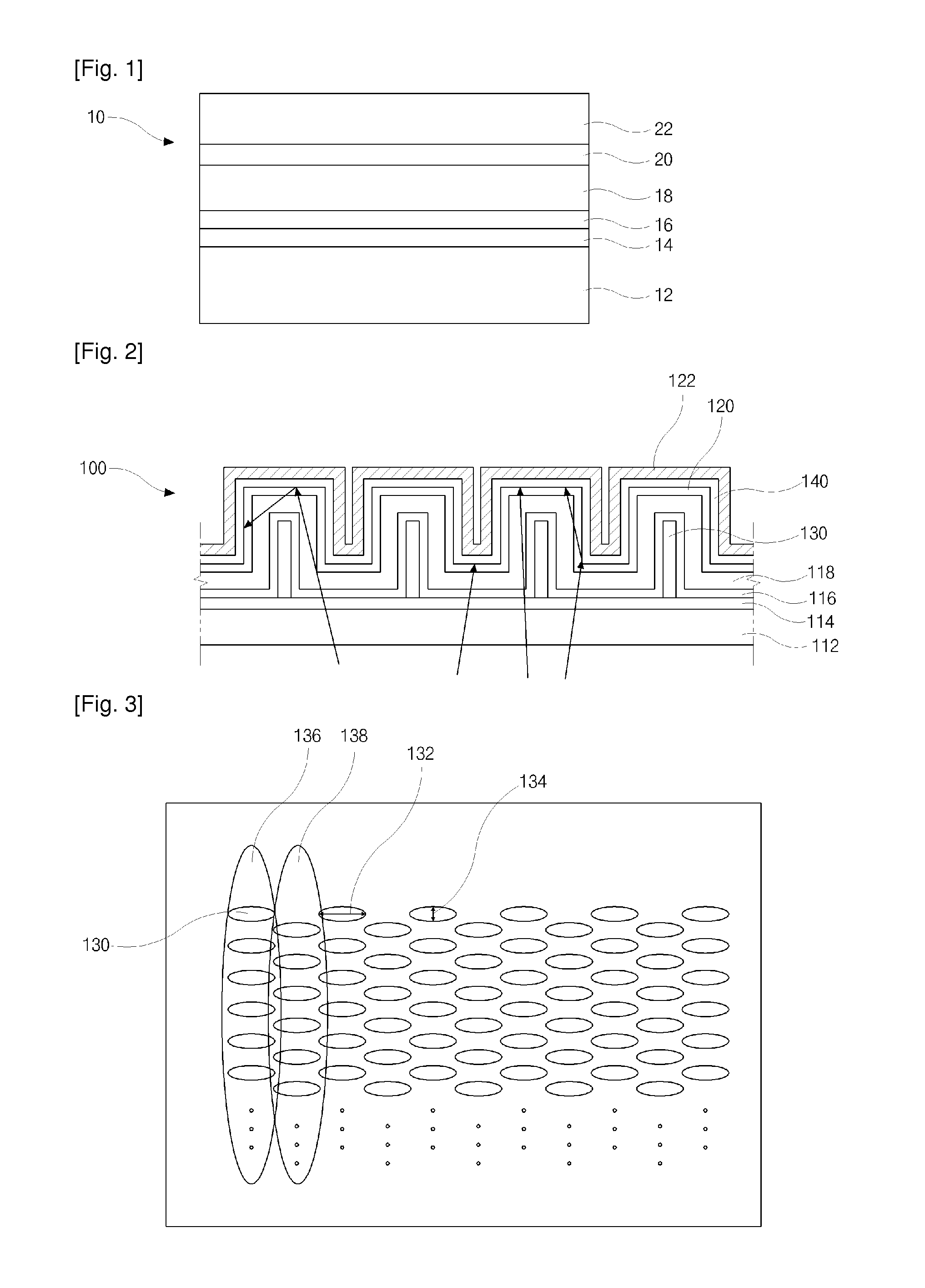Solar cell and method of fabricating the same
a technology of solar cells and materials, applied in the field of solar cells, can solve the problems of poor efficiency, increased production costs, and inability to provide glass or metallic materials, and achieve the effect of increasing the amount of light and increasing the amount of electromotive for
- Summary
- Abstract
- Description
- Claims
- Application Information
AI Technical Summary
Benefits of technology
Problems solved by technology
Method used
Image
Examples
second embodiment
[0030]Referring to FIG. 3, the plurality of pillars 130 having a cylinder shape are disposed on the first electrode 114 (of FIG. 2) of a transparent conductive oxide material. A distance between two adjacent pillars 130 is determined depending on a respective thickness of various layers stacked over the pillars 130. The pillars 130 is formed to maximize a surface area of the intrinsic semiconductor 118 (of FIG. 2) exposed to light. Each of the pillars 130 may have different cross-sectional shape and different arrangement than that of FIG. 2. For example, referring to FIG. 6 showing a plan view of a solar cell according to the present invention, the pillars 230 may have a cross shape in plan. In the cross shape pillar 230, a connecting line between one end of one axis and ends of the other axis has a curved shape 232. Referring back to FIG. 3, the pillars 130 have an oval shape of a major axis 132 and a minor axis 134. The pillars 130 are arranged to be spaced apart from each other b...
first embodiment
[0031]A method of fabricating a solar cell according to the present invention is explained with reference to FIGS. 4 and 5. Referring to FIG. 4, a first electrode 114 is formed on a substrate 112 by depositing a transparent conductive material. For example, the transparent conductive material is deposited by a chemical vapor deposition (CVD) method using tin oxide (SnO2) or zinc oxide (ZnO). Next, a silicon oxide (SiO2) layer (not shown) having a transparent property is deposited on the first electrode 114. Then, the silicon oxide layer (not shown) is patterned by a photolithography to form a plurality of pillars 130. The pillars 130 may be formed of silicon nitride (SiNx) or photoresist. Both silicon nitride (SiNx) and photoresist have a transparent property. To maximize a surface area exposed to light of the intrinsic semiconductor layer (not shown), the pillars 130 is formed of a transparent material having a high optical transmittance. Moreover, the pillars 130 are arranged to h...
PUM
 Login to View More
Login to View More Abstract
Description
Claims
Application Information
 Login to View More
Login to View More - R&D
- Intellectual Property
- Life Sciences
- Materials
- Tech Scout
- Unparalleled Data Quality
- Higher Quality Content
- 60% Fewer Hallucinations
Browse by: Latest US Patents, China's latest patents, Technical Efficacy Thesaurus, Application Domain, Technology Topic, Popular Technical Reports.
© 2025 PatSnap. All rights reserved.Legal|Privacy policy|Modern Slavery Act Transparency Statement|Sitemap|About US| Contact US: help@patsnap.com



